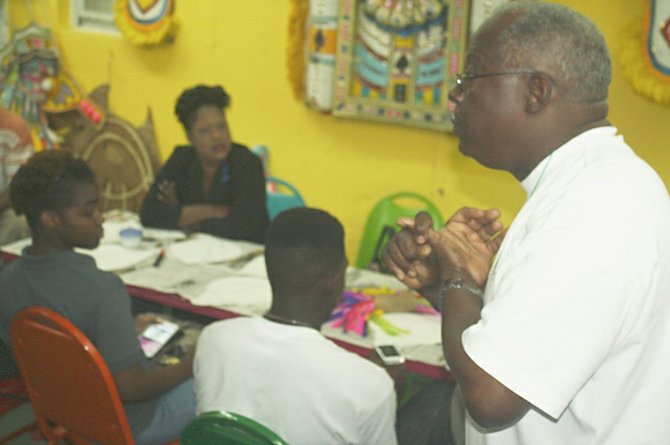STUDENTS of The Bahamas Technical and Vocational Institute recently experienced a cultural awakening when they visited ‘Educulture’, a museum on West Hill Street.
Archilene Hepburn O’Brien, an instructor of one of the institution’s Student Success classes, the opportunity created a greater awareness of who we are as a people and where we came from. The field trip was not solely for students to view artifacts, but to participate in an experience.
“The trip was to refresh and deepen the understanding of some BTVI students about culture. In the words of one student, ‘Now I see,’ confirms that the mission was accomplished,” said Ms Hepburn O’Brien.
“The preservation of culture demands introspection, retrospection and progression. That is, first we must look inside ourselves to discover and develop self; then look in the past to see where we came from and then look ahead and plot our course for the future,” she added.
During the visit, many students saw the “goose” for the first time - 10 pounds of pure iron that use to be filled with coal to press clothes.
Also on display were the kerosene lamp, coconut branches that were used to sweep the house or rake the yard and an oversized brush that was used to scrub wooden floors.
This glimpse of historic practices drew outbursts of laughter from the mature students and questions of curiosity from the younger ones.
“Today we simply push a plug in and turn a knob to iron. Today it is tiles and the Swiffer machine,” said Ms Hepburn O’Brien.
Making the presentation to students was Silbert Ferguson, who owns and manages the museum with his wife, former educator and Junkanoo enthusiast, Arlene Nash-Ferguson.
The museum sits on a parcel of land that has been in Mrs Nash-Ferguson’s family for centuries.
It was initially owned by her uncle, Ivern Bosfield, first chairman of the Masquerade Committee and is named in his honour.
Also during the cultural experience, Mr Ferguson shared costumes from yesteryear including ones made from rag cloths, newspapers, tissue and sponge (pre-independence).
Mrs Hepburn O’Brien said: “The materials used to produce the costumes were interesting and provided a glimpse not only into the culture but the economic state of the black Bahamians at the time. The costumes of today are superior in size, material, design and creativity which speak volumes to the positive development and transition of culture.”
Additionally, students got the opportunity to design and paste conch shells during the educational and cultural visit.
“It was nothing short of splendour. If the spirit of culture is to be harnessed and the practices developed and preserved, then every Bahamian must know and play their part,” said the instructor. Office Administration student, Hubert Duncombe, said the visit aroused a passion in him. “I never really was exposed to the depths of Junkanoo, why we do it. Today’s Junkanoo is far from what it should be, which should be about our freedom,” he said.
Business Administration student, Donecia Davis said she believes every Bahamian should see the displays at the museum.
“You must know your history in order to know where you’re going. Otherwise, what is the point of your existence?” she said.
The student, who is also a waitress at SuperClubs Breezes, said she now views Junkanoo differently and is armed with more information to share with guests of the hotel.





Comments
Use the comment form below to begin a discussion about this content.
Sign in to comment
Or login with:
OpenID